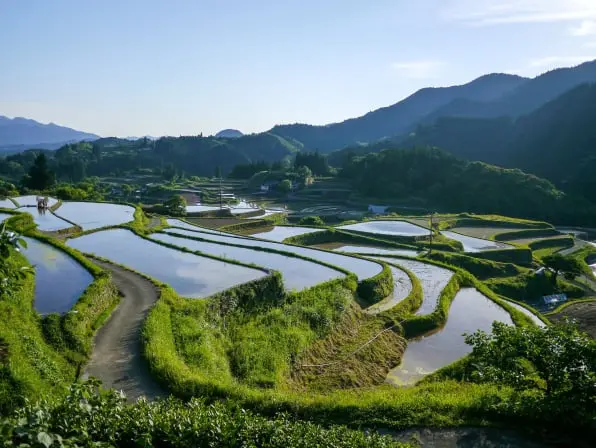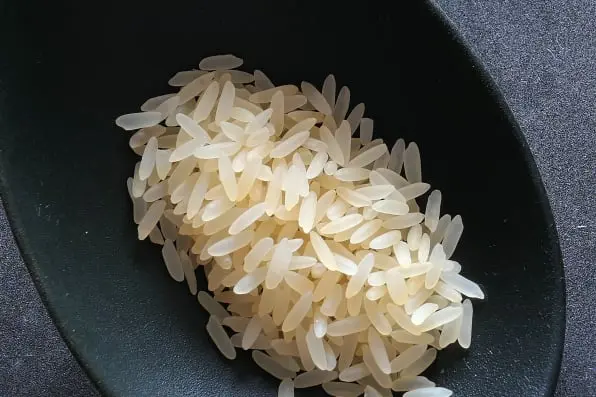Rice Traceability app:
Rice Traceability app: manage rice quality for wholesalers, rice storage, rice flour manufacture, rice value add and rice product manufacturing.

Rice Supplier Traceability & management
Rice is an essential food commodity in national and food security in Indonesia with a complex supply chain network. Various risks related to food quality and food safety occurs along the supply chain. Therefore, a tool is needed to monitor the rice production process from upstream to downstream (land-to-table) by implementing a traceability system to promote food transparency. In this system, all actors must be responsible for ensuring the quality and safety of products through various handling processes carried out from cultivation to product distribution. This paper aimed to develop a smart IT (Information Technology)-based traceability system in the rice supply chain using the System Development Life Cycle (SDLC). The actors involved in the rice supply chain consist of farmers, processing industries, distributors, bulogs, and retailers. Furthermore, this paper discussed the system architecture and the development of traceability system design using a data flow diagram (DFD). The developed prototype system shows the functional requirements of the system and can be used by stakeholders to monitor the production process and assist the decision-making process.
The traceability system is a management system for managing risk, proposed by the Codex Alimentarius, that is able to track the movement of food at certain stages of production, processing, and distribution [1]. Many countries are trying to implement this system in various commodities through regulations they have set to ensure the quality and safety of food [2,3]. Rice is an essential commodity in Indonesia because the majority of Indonesia’s population consumes it as a daily carbohydrate intake [4]. Based on data from the Agricultural Datacenter and Information [5], the average rice consumption in Indonesia reaches 84.9 kg annually. Nevertheless, the supply chain of rice in Indonesia still faces several problems, one of them is traceability. Traceability has become a pressing issue because of the complexity of the supply chain network of rice and the rise of various quality risks along the supply chain. One of the risks that often occurs is the process of quality manipulation carried out by the rice milling industry and rice traders. In practice, Suismono [6] revealed that quality manipulation can occur in several ways. Those are, (a) mixing of rice between varieties and between qualities, (b) re-mixing of rice that has experienced a quality decline (reprocessing), (c) adding dangerous chemicals, such as chlorine and aromatic compounds in rice, and (d) the use of packaging labels that are not in accordance with the contents. Previous studies have reported the presence of hazardous ingredients in rice sold in the market. Aminah et al. [7] found that 33.33% of all samples examined in the traditional Makassar market tested positive for chlorine, while Yuda et al. [8] found that 6% of rice samples tested positive for chlorine in the Padang city market. To minimize these problems, all actors involved in the supply chain must practice excellent handling standards and record all relevant activities. Kresna et al. [9] explained that proper documentation is the key to implementing a traceability system in Indonesia.

Rice Traceability during production
View App Specifications.
Nowadays, the preferences of organic products such as organic rice have been increased. It because of the people awareness of the healthy and eco-friendly food product consumption has grown. Therefore, it is very important to ensure organic quality of the product that will be produced. Certification is a series of process that holds to ensure the quality of products meets all criteria of organic standards. Currently, there is a problem that traceability information system for organic rice certification has been not available. The current system still conducts manually caused the loss of information during storage process. This paper aimed at developing a traceability framework on organic rice certification process. First, the main discussed issues are organic certification process. Second, unified modeling language (UML) is used to build the model of user requirement in order to develop traceability system for all actors in the certification process. Furthermore, the information captured model along certification process will be explained in this paper. The model shows the information flow that has to be recorded for each actor. Finally, the challenges in the implementation system will be discussed in this paper.

Rice Traceability & management
Nowadays, the preferences of organic products such as organic rice have been increased. It because of the people awareness of the healthy and eco-friendly food product consumption has grown. Therefore, it is very important to ensure organic quality of the product that will be produced. Certification is a series of process that holds to ensure the quality of products meets all criteria of organic standards. Currently, there is a problem that traceability information system for organic rice certification has been not available. The current system still conducts manually caused the loss of information during storage process. This paper aimed at developing a traceability framework on organic rice certification process. First, the main discussed issues are organic certification process. Second, unified modeling language (UML) is used to build the model of user requirement in order to develop traceability system for all actors in the certification process. Furthermore, the information captured model along certification process will be explained in this paper. The model shows the information flow that has to be recorded for each actor. Finally, the challenges in the implementation system will be discussed in this paper.

Rice factory hygiene checklist
Rice quality affects social stability, consumer health, and corporate brand benefit. The traditional supply chain traceability management system is centralized, monopolized, asymmetric, and opaque. It is the main factor leading to frequent food safety incidents. This paper proposes a technological quality control system for rice supply chain to protect rice products quality and safety. Firstly, it adopts risk assessment and traceability mechanism to prevent the hazard factors in the production and processing. Then, to prevent spoiled food from endangering the consumers’ health and reduce food waste, it explores a shelf life model of rice products to predict the remaining shelf life of products. Finally, this paper constructs a decentralized traceability management system based on blockchain and IoT, which enables consumers to access the real information of rice products and helps supervisors to monitor the quality of products in the supply chain.